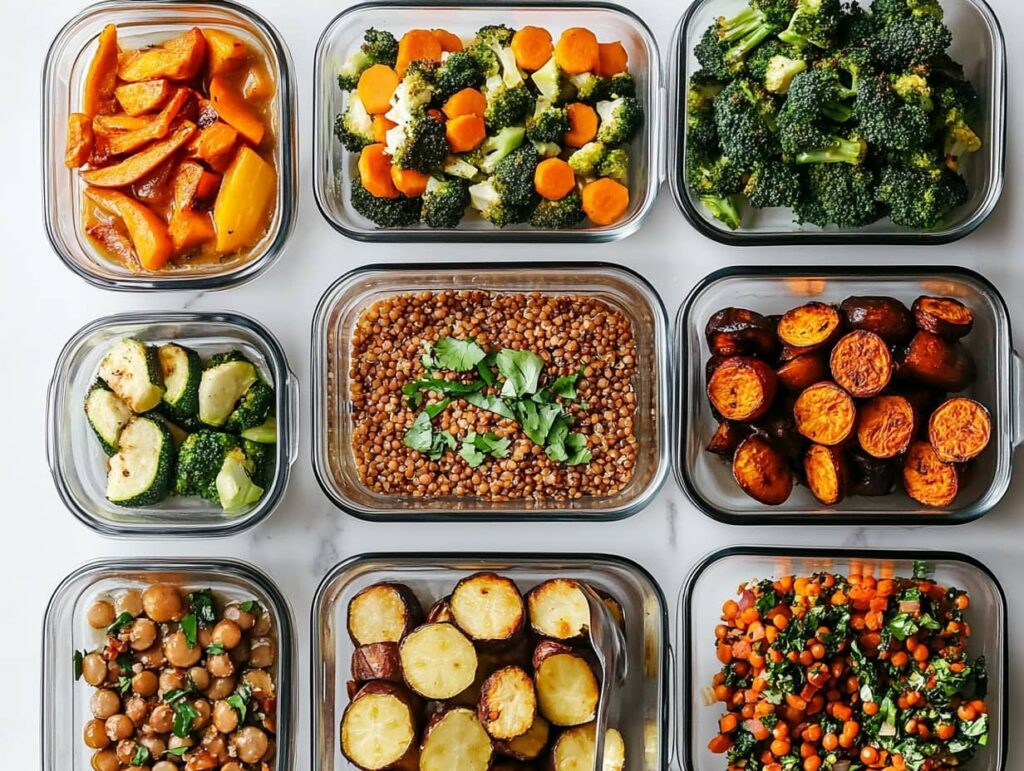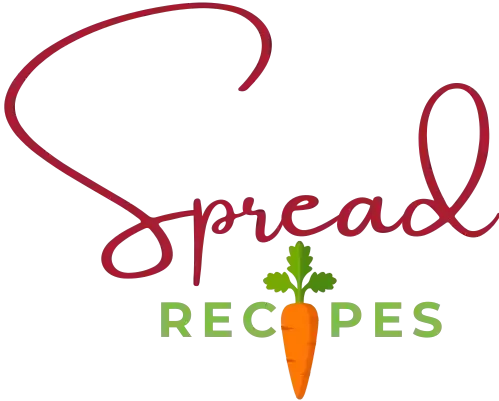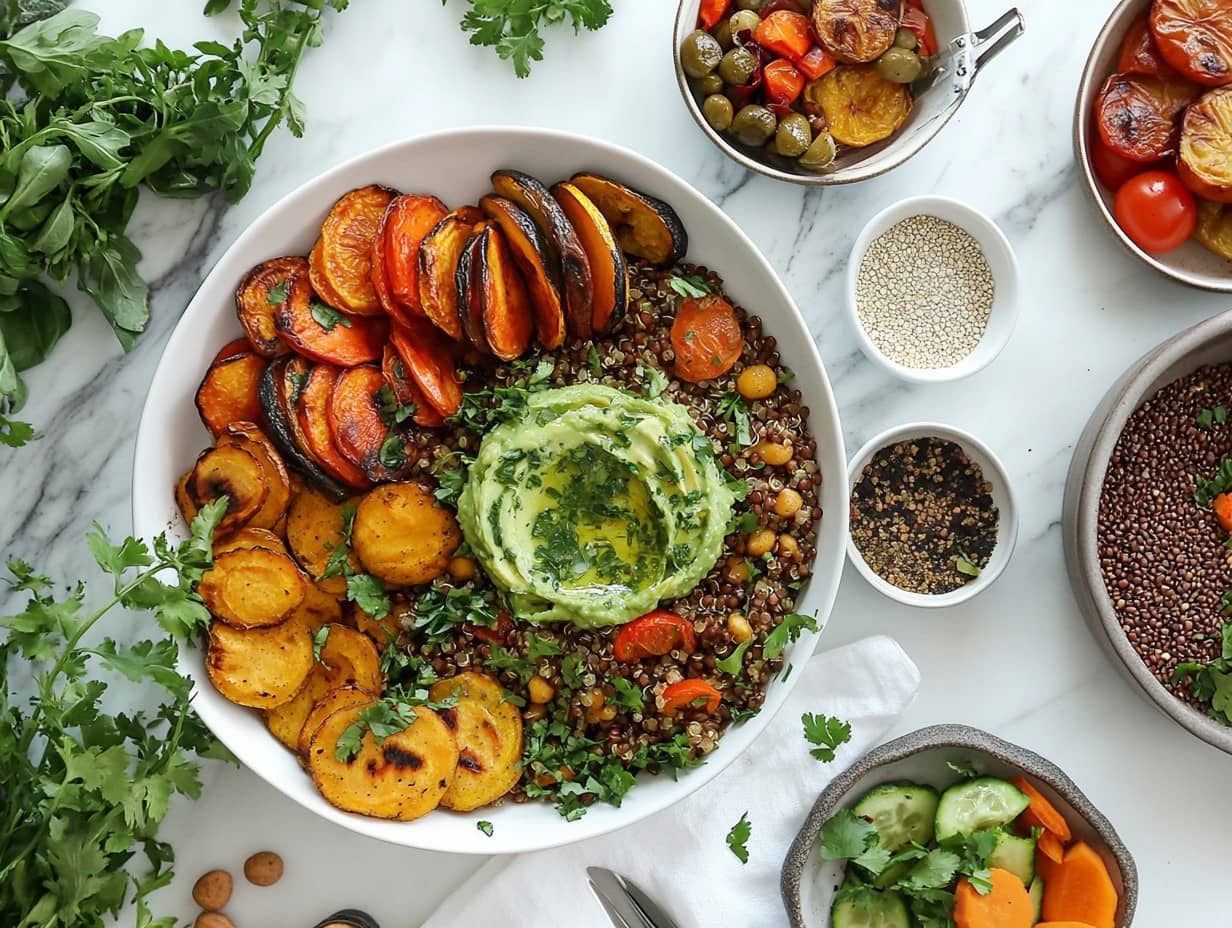How to make a perfect vegan menu? Veganism is more than just a trendy buzzword; it’s a lifestyle that revolves around compassion, health, and sustainability. At its core, veganism avoids all animal-derived products, including meat, dairy, eggs, and even honey. Why? Because it’s not just about what’s on your plate; it’s about choosing kindness for animals, people, and the planet.
Think of veganism like an adventure. You’re diving into a world of vibrant vegetables, wholesome grains, plant-based proteins, and flavors you might’ve never explored before. And here’s the best part: it’s not about deprivation it’s about abundance. With a little planning, you can whip up meals so delicious, even die-hard meat lovers will be asking for seconds!
Table of Contents
The Basics of a Vegan Diet: Essential Ingredients and Food Groups
To create a vegan menu that’s both satisfying and nutritious, you need to know the building blocks. Let’s break it down:
Key Food Groups in a Vegan Diet
- Vegetables: The colorful stars of any vegan dish. Kale, spinach, bell peppers, zucchini you name it!
- Fruits: Nature’s candy. Think bananas, berries, apples, and tropical goodies like mangoes.
- Grains: Rice, quinoa, oats, and whole wheat are staples for energy-packed meals.
- Legumes: Lentils, chickpeas, black beans these are protein powerhouses.
- Nuts and Seeds: Almonds, chia seeds, and flaxseeds add crunch and omega-3s.
- Plant-Based Proteins: Tofu, tempeh, seitan, and plant-based meats to keep things interesting.
For more insights, explore Staple Vegan Foods to Stock Up On.
Sample Nutrition Breakdown
Here’s a snapshot of what your day might look like:
| Food Group | Examples | Nutrients |
|---|---|---|
| Vegetables | Spinach, Broccoli | Vitamins A, C, Fiber |
| Fruits | Apples, Bananas | Natural Sugars, Vitamin C |
| Grains | Brown Rice, Quinoa | Carbohydrates, Iron |
| Legumes | Lentils, Chickpeas | Protein, Folate |
| Plant-Based Proteins | Tofu, Seitan | Protein, Calcium |
Nutritional Considerations for a Vegan Menu
When designing a vegan menu, nutrition matters a lot. You don’t want to miss out on essential nutrients like protein, iron, and B12. Thankfully, with a little creativity, you can cover all your bases.
Protein-Packed Vegan Foods
Many people ask, “Where do vegans get their protein?” The answer? Everywhere! From lentils and black beans to tofu and quinoa, plant-based protein sources are versatile and delicious.
Iron and B12: The Vital Duo
Iron is essential for energy, and while it’s abundant in spinach and lentils, pairing it with vitamin C (like in citrus fruits) helps your body absorb it better. B12 is a trickier one since it’s mainly found in animal products, but fortified foods like plant-based milk or supplements will do the job.
“If your body is a car, think of iron and B12 as the fuel that keeps you going!”
Building a Balanced Vegan Menu: Key Principles
A great vegan menu isn’t just a list of dishes it’s a symphony of flavors, textures, and nutrients. Here’s how to nail it:
Combine Flavors and Textures
Balance soft and crunchy, sweet and savory. Think roasted sweet potatoes with a creamy tahini dressing or a grain bowl topped with toasted seeds.
Set Your Meal Goals
Want more energy? Focus on whole grains and proteins. Craving comfort food? Try hearty stews or creamy pasta with cashew sauce. Tailor your menu to fit your lifestyle and cravings.
Seasonal and Local Produce
Ever noticed how strawberries taste better in summer? Seasonal produce isn’t just fresher it’s often cheaper and more flavorful. Visit your local farmer’s market to find inspiration for your menu.
Creating a Vegan Menu for Different Occasions
Whether you’re meal-prepping for the week or throwing a party, there’s a vegan menu for every situation.
Everyday Vegan Menus
For busy weekdays, keep it simple:
- Breakfast: Overnight oats with almond milk and fresh berries 🍓.
- Lunch: A Buddha bowl with quinoa, roasted veggies, and hummus.
- Dinner: Lentil curry with brown rice and a side of steamed broccoli.
Special Occasion Menus
Hosting a party? Impress your guests with these:
- Starter: Vegan bruschetta with tomatoes and basil.
- Main: Eggplant parmesan with cashew cheese.
- Dessert: Chocolate avocado mousse.
“There’s a vegan version of just about everything yes, even cheesecake!”
Learn more about vegan snack ideas in Vegan Snack Guide.
Budget-Friendly Vegan Menus: Saving Money While Eating Plant-Based
One of the biggest myths about vegan eating is that it’s expensive. Sure, some specialty vegan products can cost a pretty penny, but a well-planned vegan menu doesn’t have to break the bank. In fact, sticking to whole foods and pantry staples can save you a ton of cash.
Affordable Vegan Staples to Stock Up On
Building a budget-friendly vegan pantry is all about stocking versatile, long-lasting ingredients. Here’s your ultimate shopping list:
| Category | Examples | Why It’s a Budget Saver |
|---|---|---|
| Grains | Rice, Oats, Pasta | Cheap, filling, and incredibly versatile. |
| Legumes | Lentils, Black Beans, Chickpeas | High in protein, affordable, and easy to store. |
| Frozen Vegetables | Peas, Spinach, Broccoli | Cost less than fresh and last longer. |
| Canned Goods | Tomatoes, Coconut Milk | Convenient and perfect for soups or curries. |
| Basic Seasonings | Spices, Soy Sauce, Nutritional Yeast | Transform simple dishes into flavorful meals. |
Meal Prepping and Batch Cooking
Cooking in bulk is your best friend when it comes to saving both time and money. Spend one day a week prepping meals like lentil stew, chickpea salad, or roasted veggie trays, and enjoy them throughout the week.

Here’s a simple example:
- Sunday Prep: Make a big pot of black bean chili and cook a batch of quinoa.
- Weekday Meals: Use the chili for tacos, burrito bowls, or as a topping for baked sweet potatoes.
“When you cook once and eat twice (or thrice), your wallet and your schedule will thank you!”
Overcoming Common Challenges in Vegan Menu Planning
Switching to a vegan lifestyle comes with its fair share of challenges, especially if you’re new to the game. But don’t worry; every problem has a tasty solution.
Handling Picky Eaters or Mixed-Diet Households
Got a meat lover in the family? Don’t sweat it. Start with “accidentally vegan” dishes like spaghetti marinara, veggie stir-fries, or bean burritos. These meals are satisfying and won’t make anyone feel like they’re missing out.
Pro tip: Serve meals “build-your-own” style. For example, set out bowls of rice, beans, veggies, and toppings so everyone can customize their plate.
Finding Vegan Comfort Foods
Let’s face it sometimes you just want a cheesy pizza or a creamy mac and cheese. Luckily, there are plant-based versions of all your favorite comfort foods. Use cashew cream for pasta, or try a store-bought vegan mozzarella for pizza night.
“Missing cheese? Nutritional yeast is like the fairy dust of vegan cuisine it adds a cheesy flavor to just about anything!”
Discover how to make vegan dishes satisfying in How to Make Vegan Food Filling.
Tools and Resources for Vegan Menu Creation
If you’re feeling overwhelmed, don’t worry there are tons of tools out there to help you create a stellar vegan menu.
Best Apps and Websites for Vegan Recipes
- Forks Over Knives: Packed with healthy, whole-food plant-based recipes.
- Minimalist Baker: Great for simple recipes that use 10 ingredients or less.
- HappyCow: Helps you find vegan-friendly restaurants near you.
Kitchen Gadgets You’ll Love
Some gadgets make vegan cooking a breeze. Here’s a shortlist:
- Blender: Perfect for smoothies, soups, and sauces.
- Food Processor: Great for chopping veggies or making homemade hummus.
- Spiralizer: Turns veggies like zucchini into noodles (a.k.a. zoodles).
“Think of these tools as your vegan sidekicks they’ll make your kitchen adventures more fun and less stressful.”
Step-by-Step Guide to Designing Your Own Vegan Menu
Creating your own vegan menu might feel like a puzzle at first, but once you get the hang of it, it’s like painting a masterpiece. Here’s how to get started:
1: Assess Your Preferences and Needs
Ask yourself:
- Do I prefer sweet or savory breakfasts?
- How much time do I have to cook during the week?
- Are there any allergies or restrictions I need to consider?
2: Create a Weekly Meal Plan Template
Divide your week into categories:
- Breakfast: Smoothies, oatmeal, or avocado toast.
- Lunch: Grain bowls, wraps, or hearty salads.
- Dinner: Stir-fries, pasta, or soups.
3: Adjust for Variety
To keep things exciting, switch up your ingredients weekly. For example:
- Week 1: Mexican-inspired dishes (think tacos, enchiladas).
- Week 2: Mediterranean flavors (falafel, tabbouleh).
Common Mistakes to Avoid When Making a Vegan Menu
Even seasoned vegans slip up sometimes. Here are a few pitfalls to steer clear of:
1. Overlooking Key Nutrients
Don’t forget your B12, iron, and omega-3s. Include fortified foods, or consider taking a supplement to fill the gaps.
2. Relying Too Heavily on Processed Foods
Plant-based nuggets and frozen meals are convenient, but they shouldn’t make up the bulk of your diet. Stick to whole foods as much as possible.
3. Skipping Meal Prep
Without a plan, you’re more likely to grab something unhealthy or expensive. Taking the time to prep meals saves both time and stress.
“A little planning goes a long way your future self will thank you!”
Frequently Asked Questions (FAQs) About Vegan Menus
1. How Can I Start a Vegan Diet If I’m Not Used to Cooking?
Starting a vegan diet doesn’t mean you need to be a master chef. Start simple with recipes that don’t require fancy techniques, like grain bowls, salads, or pasta with marinara sauce. Use online resources, like YouTube tutorials or vegan cooking apps, to learn the basics step by step. Remember, practice makes perfect, and even small steps count.
“Think of cooking as an experiment sometimes you’ll create masterpieces, and other times, it’s just lunch!”
2. Are Vegan Menus Suitable for Children and Athletes?
Absolutely! A well-balanced vegan menu can meet the nutritional needs of everyone, including kids and athletes. For children, focus on nutrient-dense foods like avocados, nut butters, and fortified plant-based milks. For athletes, incorporate high-protein options like lentils, tofu, and quinoa to support muscle recovery and energy levels.
3. What Are Some Easy Substitutions for Dairy and Meat in Recipes?
Substitutions are easier than you think.
- For Dairy: Use almond, oat, or soy milk. Replace butter with coconut oil or vegan margarine.
- For Meat: Swap ground beef for lentils or crumbled tofu in tacos and pasta dishes. For a chewy texture, try jackfruit or seitan.
4. How Do I Ensure My Vegan Diet Is Balanced?
Balance is all about variety. Incorporate all major food groups grains, legumes, vegetables, fruits, nuts, and seeds into your meals. Use visual tools like the “Vegan Plate” method, which divides your plate into protein, starch, and veggie sections.
5. Can I Still Enjoy Desserts on a Vegan Menu?
Of course! Vegan desserts are a treat for the taste buds. Make brownies with flax eggs, whip up banana ice cream, or bake cookies using applesauce as a binder. Many traditional recipes can be “veganized” with just a few swaps.
6. Is It Hard to Eat Out as a Vegan?
Not at all! Many restaurants now offer vegan options, and apps like HappyCow can help you find vegan-friendly spots near you. If all else fails, most places can accommodate you with a little customization just ask for veggie-loaded dishes without the cheese or meat.
Conclusion: Your Journey to Crafting a Perfect Vegan Menu
Creating a vegan menu might seem overwhelming at first, but with a little planning and creativity, it becomes second nature. Whether you’re focusing on everyday meals, hosting a vegan dinner party, or just trying to eat more plant-based, the possibilities are endless. 🌱
Remember, the key to success is balance, variety, and a willingness to experiment. And don’t be afraid to stumble along the way every misstep is just another step closer to becoming a plant-based pro.
“Start small, dream big, and let your meals reflect your values and tastes.”

